Sous Vide Turkey: Breast and Leg Done Perfectly
Thanksgiving day can be, well, overwhelming. There are rolls to roll, pies to prepare, casseroles to cook, all in addition to the central focus of the whole meal, the turkey. What is an oven to do? What are you to do?
For one of the easiest—and certainly the tastiest—turkeys ever, cook it sous vide. Now, I know that not everyone has a sous vide circulator, but if you do, you should seriously consider sous vide-ing your bird for Thanksgiving. You free up the oven for hours, the turkey can be held even if it’s done early, and you will not get a juicier turkey by any other method. Trust me. I’ve tried pretty much all of them.
Sous vide has many advantages (and, yes, some disadvantages), but the main one is that with the help of a leave-in probe thermometer like ChefAlarm®, it’s basically impossible to overcook your turkey. Take a look at the method and consider this amazing way to make your Thanksgiving day stress-free and delicious.
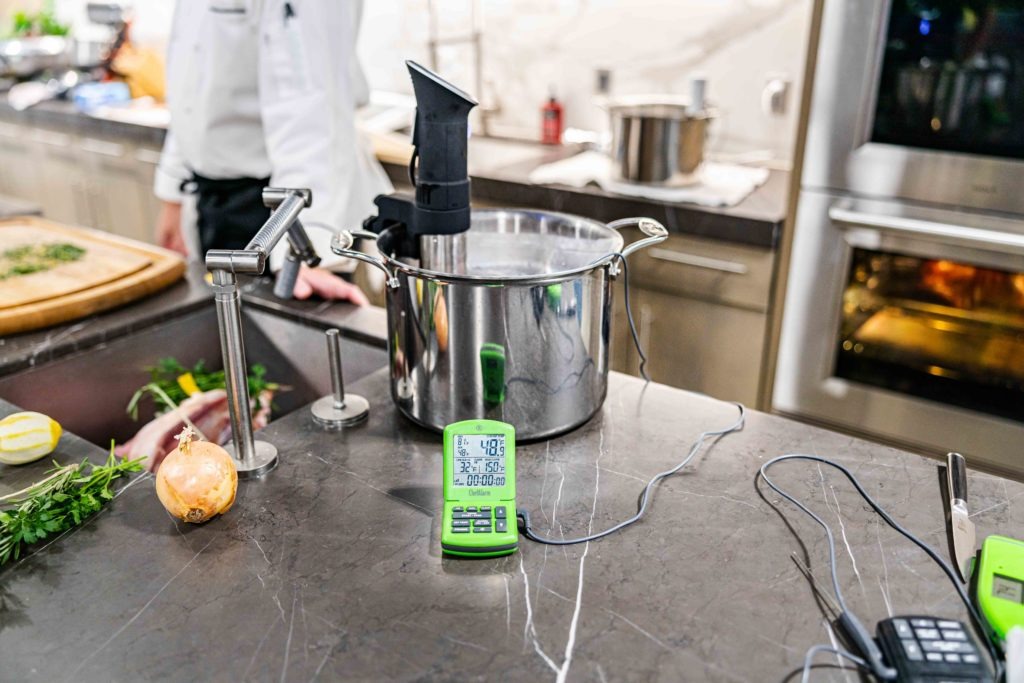
At what temperature should I sous vide turkey?
One of the best things about sous-vide cooking a turkey is that you can cook it to the exact temperature you want for just the right doneness—whether dark or light meat. Use the USDA safe poultry temperatures chart and dial in just the temp you want, then make sure it cooks at that temperature for the food-safe time.
I generally cook my sous vide breasts in a bath at 152°F (67°C) until they reach an internal temperature of 150°F (66°C). Once that temperature is reached, I make sure that I leave the breasts in the cooking bath for 5 minutes, as the safe bacterial-kill time at that temperature is 4.9 minutes. Use a ChefAlarm leave-in probe thermometer, a waterproof needle probe, and some sous-vide tape to keep track of the internal temperature. Once you reach the desired temp, set the ChefAlarm’s timer to make sure the turkey stays at the required temperature long enough to kill all the bacteria.
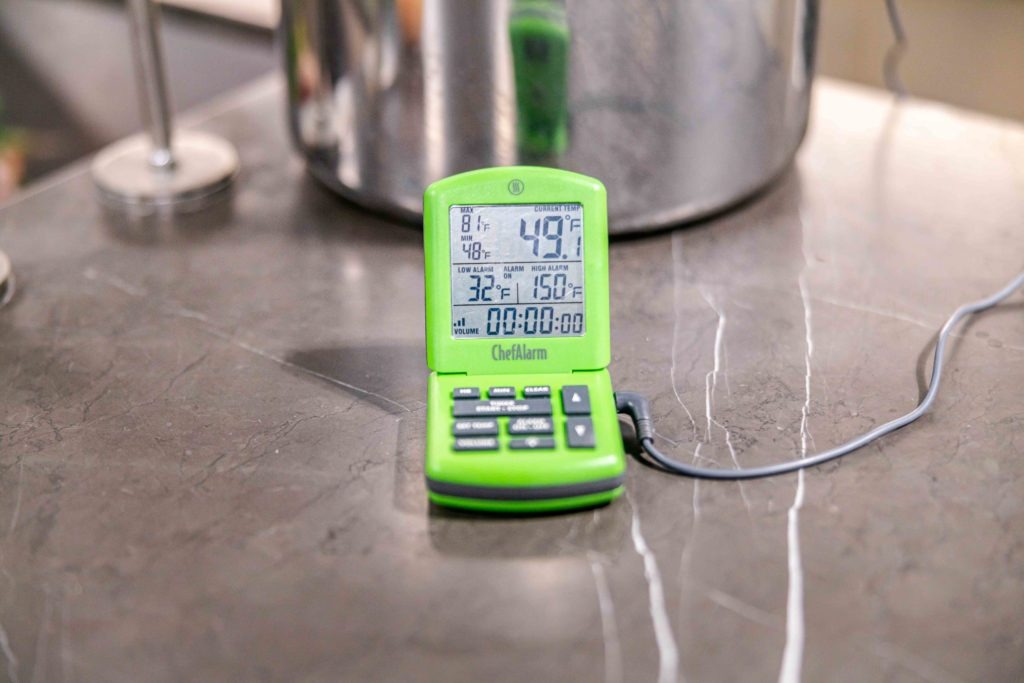
The legs and thighs need a higher temp to melt the collagen into gelatin, so I’ll cook them at 192°F (89°C) to get the meat up to 190°F (88°C). The leg meat comes out tender, yielding, and delicious.
How long does it take to sous vide turkey?
Cooking a turkey via sous vide doesn’t take very long—about 2 hours! Even with only one circulator, you can get the whole thing done in less time than it takes to cook a bird in the oven. Put all the parts, bagged separately, in the water bath and set it to your lower temp for the breasts. Once the breasts reach their target temp and time, move them to a cooler to keep warm while you crank the heat up on the circulator to finish the legs and thighs. Of course, speed is not necessarily of the essence with sous vide, but it’s nice that you can get the job done so quickly.
Note: to get the fastest results, make sure that your turkey is properly thawed.
Should you brine a turkey before sous vide cooking it?
Put briefly, you don’t need to. The primary objective with brining is to denature the proteins so that they don’t squeeze water out when they overcook; and in a hyper-controlled environment, like a sous-vide bath, there’s no need to guard against it. Cooking your turkey up to 150°F (66°C) presents little to no risk of drying out, so the extra—and, frankly, bothersome—brining step is not necessary.
That being said, seasoning is recommended. I salt the breasts lightly and add fresh herbs to each sous-vide bag. You can use any seasonings you like, but sage, black pepper, and some parsley are very nice. The flavorings all cook and infuse into the turkey directly, giving you deeper seasoning. The result is unlike any turkey you’ve ever had.
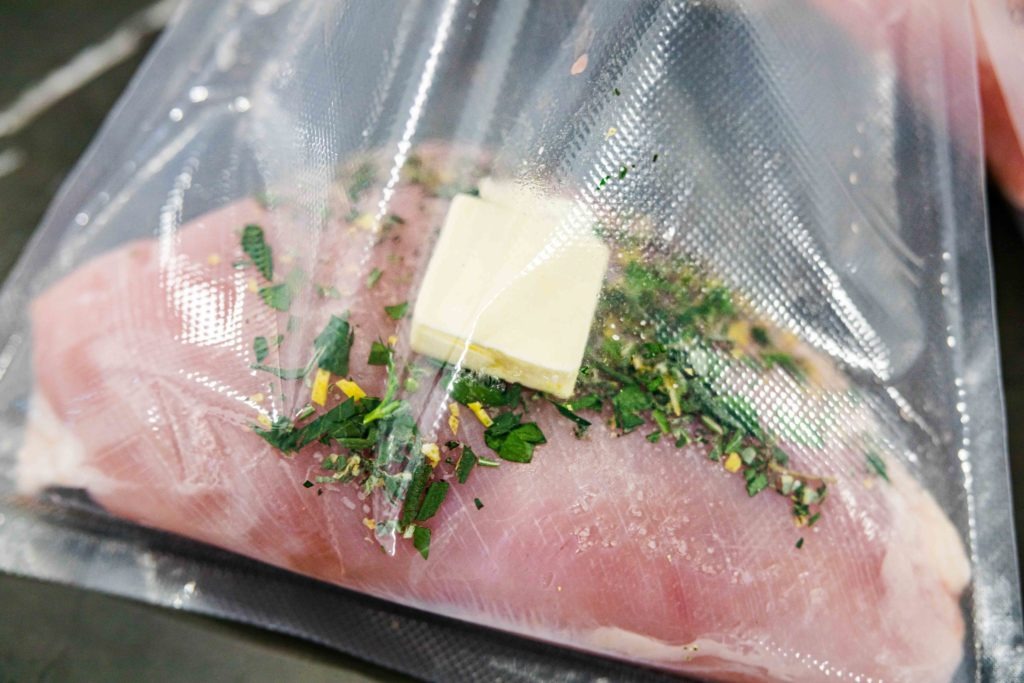
Should I sous vide turkey with the skin on?
One of the joys of a roasted turkey is the crackly/crisp skin. Unfortunately, sous-vide cooking won’t give you that. It turns out that gently simmered poultry skin isn’t everyone’s favorite. Who knew? You get better results—easier carving, better presentation, deeper flavor infusion—by removing the skin from the turkey parts before you bag and cook them.
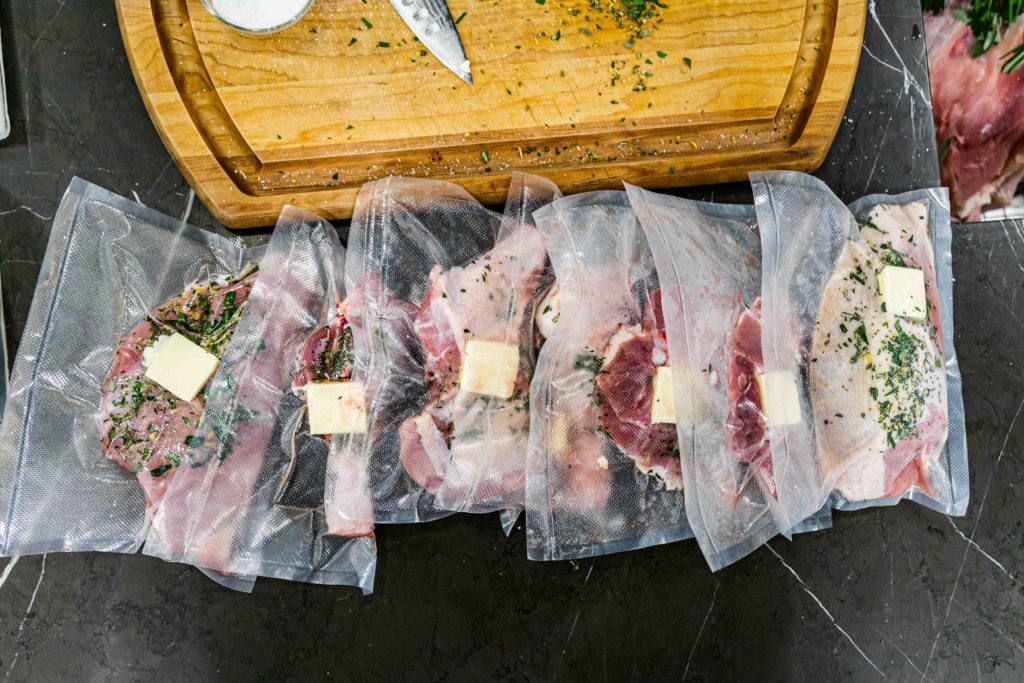
But just because you can’t get crisp skin from sous vide doesn’t mean you can’t have crisp skin with your sous vide turkey. You can follow the instructions on our blog for rendering beef tallow to render out a delicious batch of turkey schmaltz. Chop the turkey skin into small bits (you can use a food processor, but I recommend just using a sharp knife and doing it by hand), put them in a pot of water to just cover, add a good pinch of salt, and simmer them. After the water cooks out, the fat will start to render and fry the turkey skin. You’ll end up with tiny golden nuggets of turkey-skin chicharrones.
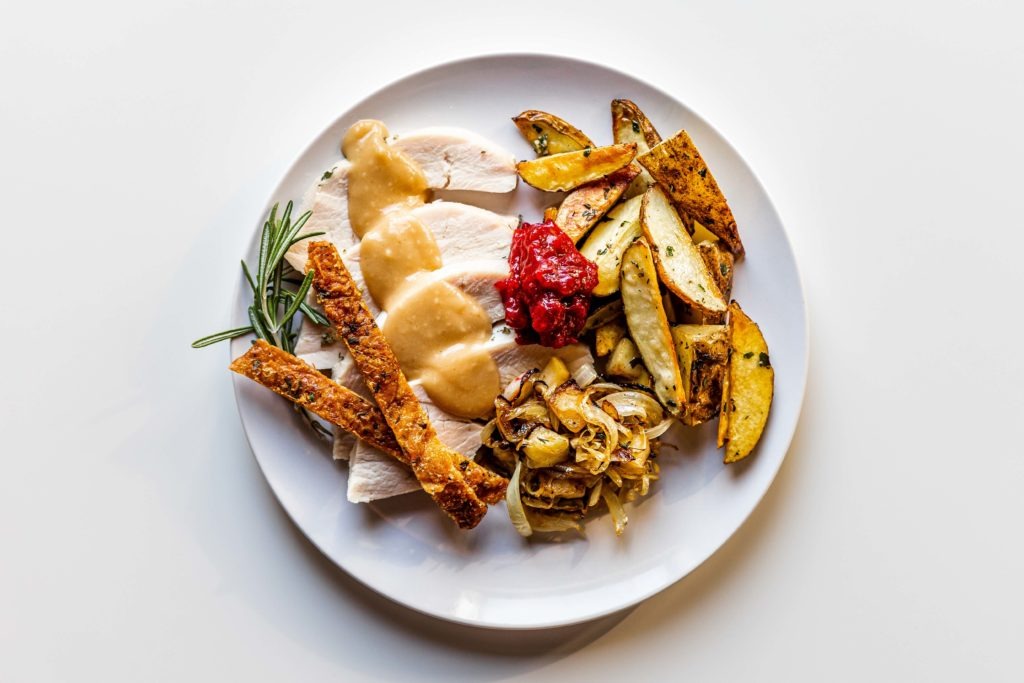
Or you can very gently render and cook whole sheets of the skin over low heat in a pan, much like bacon. We did that for this cook and then sliced those crisp-skin pieces into strips to serve with the turkey.
If you can resist eating them all at once, you can scatter the crisp skin from either method atop your sliced turkey when you serve it. Or, don’t resist, and just snack on them while you cook your other sides. Either way, save that turkey fat for later use.
If your Thanksgiving day is big and hectic, if your oven is running at max capacity, and, most of all, if you have a sous vide circulator, give this method a try. Yes, it’s unconventional, but it is also exceptional. The texture of perfectly done breast meat, the richness of the dark meat, the depth of seasoning—they all shine in this presentation more than in any other.
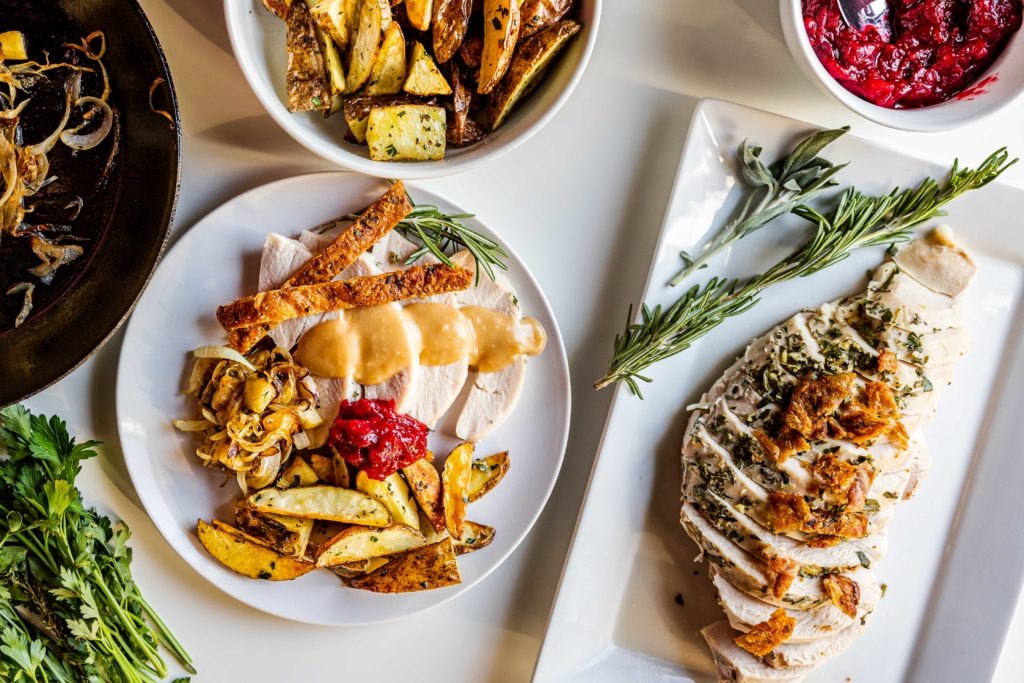
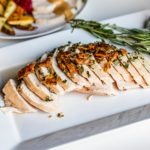
Sous Vide Turkey Recipe
Description
Sous vide turkey for Thanksgiving or any other celebration.
Ingredients
- 1 turkey, well thawed
- Fresh herbs—for instance, parsley, sage, thyme, rosemary
- Kosher salt and fresh-ground black pepper
- Zest of 1 lemon
- 8 Tbsp unsalted butter, divided
Special equipment: sous vide circulator
Instructions
- Use your immersion circulator to preheat a pot of water that is large enough to hold all the turkey bags. Heat it to 152°F (67°C).
- Break the turkey down into its parts. Remove the skin from the breasts, thighs, and legs.
- Place one turkey part each in vacuum-seal bags. Season each bag with fresh herbs, lemon zest, salt, pepper, and 1 Tbsp butter.
- Seal the bags.
- Probe one of the breasts by using some sous vide tape and a waterproof needle probe.
- Set the high-temp alarm on your ChefAlarm for 150°F (66°C).
- Place the bags in the water bath and cook.
- When the high-temp alarm sounds, set the ChefAlarm’s timer for 5 minutes.
- When the timer sounds, remove the bags with the breast meat to an empty cooler to keep warm. Increase the temperature of the water bath to 192°F (89°C) and continue to cook the dark meat.
- Re-set the high-temp alarm for 190°F (88°C) and insert a probe into one of the thighs using sous vide tape.
- When the high-temp alarm sounds, remove those bags to the cooler.
- You can drain the turkey/melted butter liquid from the bags and use it to enrich your gravy.
- Slice and serve the best turkey ever.
Shop now for products used in this post:


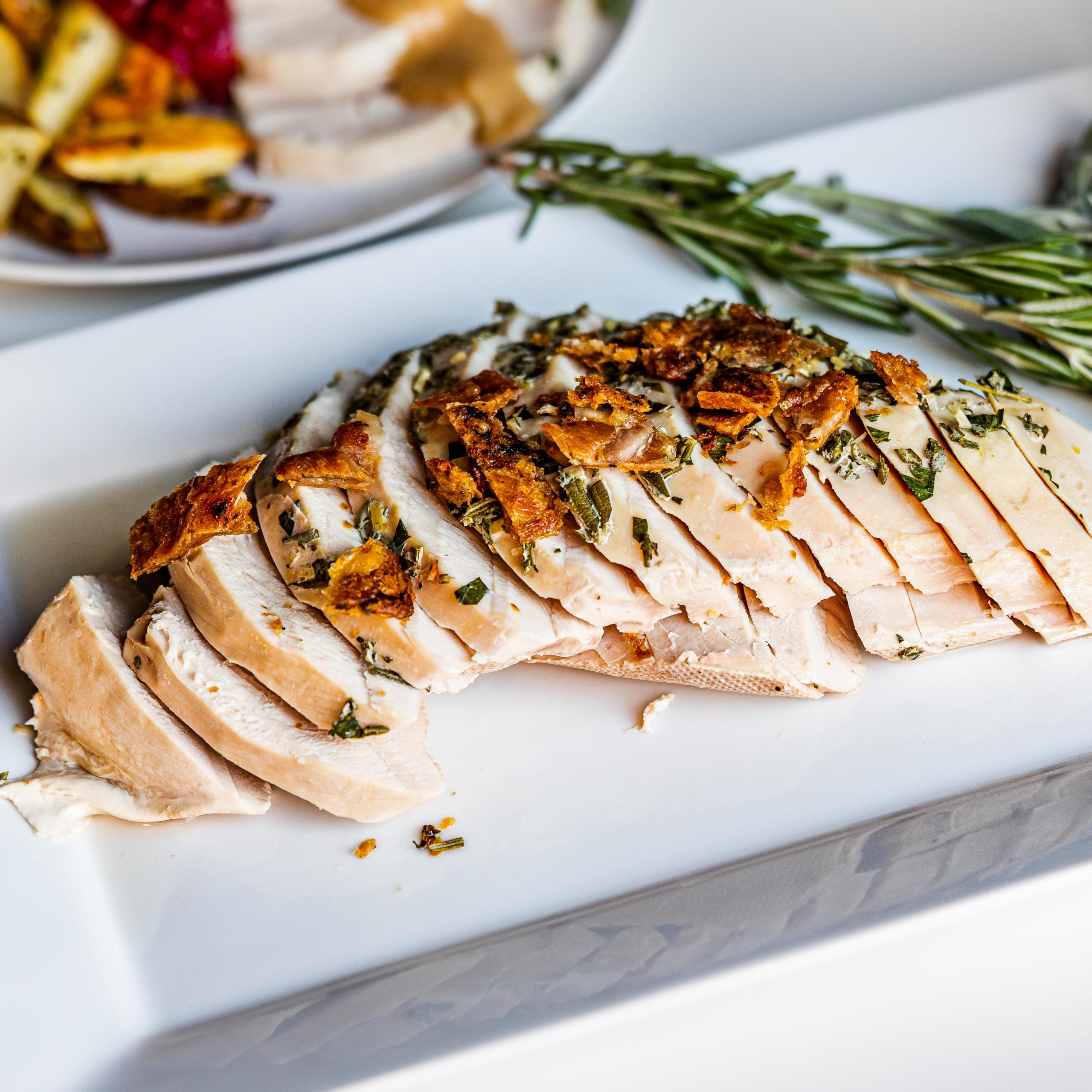
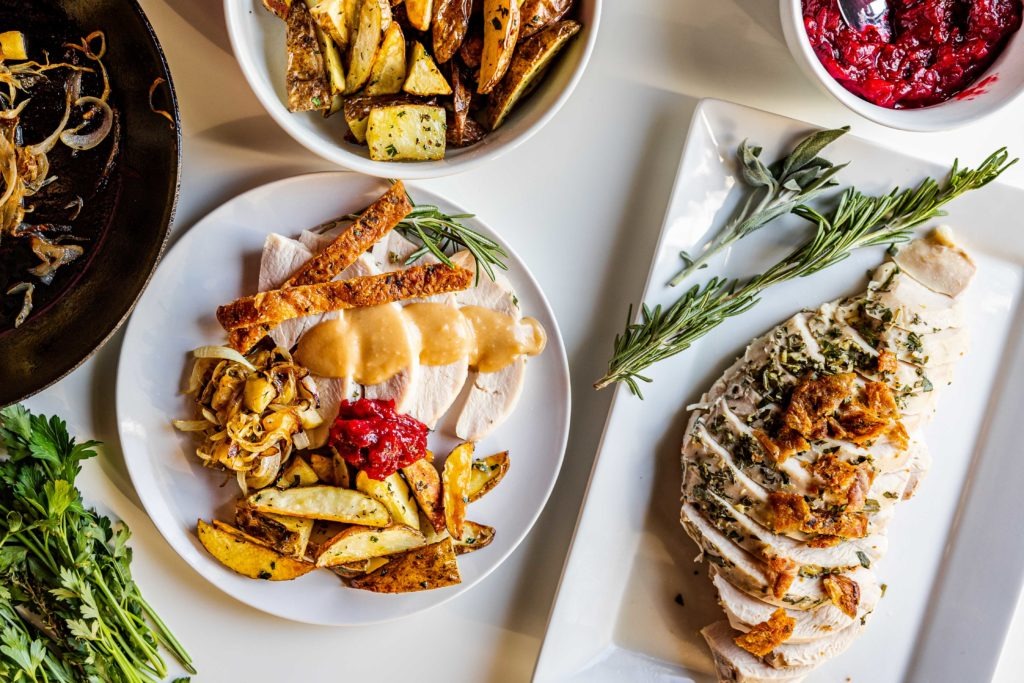

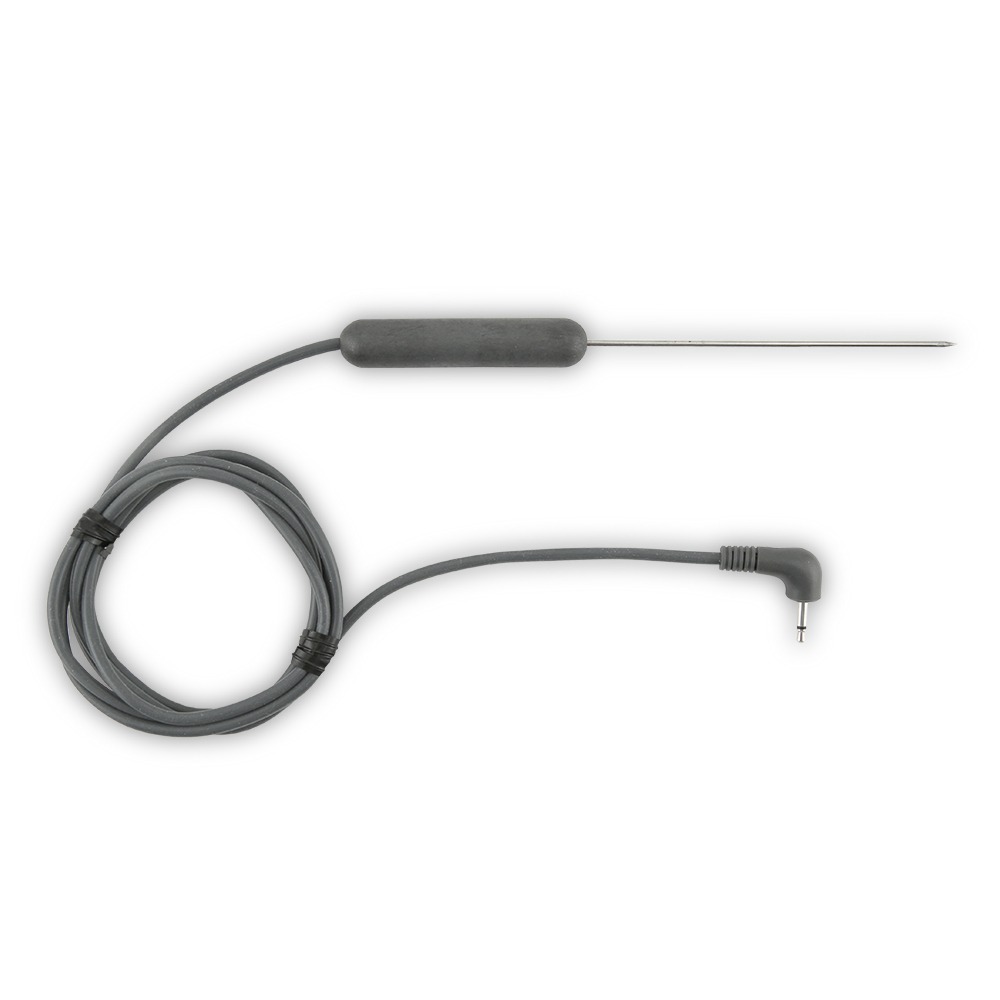
I’m confused why we need the ChefAlarm ?
What happens to the quality of the meat if we cook the breast a little longer at 152 degrees ?
The ChefAlarm tells you when the coldest part of the meat reaches the target temperature so you can start timing. I definitely WOULD cook to 152°F and hold it longer.
I don’t have a sous vide set-up and don’t plan on getting one. I know it’s cheating (big time), but what’s to stop me from replicating the principle in an oven? Could I break down the bird (or whatever) into separate parts and then roast them very slowly at the finish (target) temp in an oven? For instance, the leg and thigh sections would roast at 195℉ and held there for 20 minutes (for safety), and breast sections at 160℉. That can’t be any more tedious than doing the whole sous vide thing. It wouldn’t be as accurate, but it would sure be a whole lot cheaper. I know it would take a lot longer because of the slower transfer of heat by air than by liquid. I know the skin won’t get crisp, but I don’t eat the skin anyway. Or, I could use a propane torch to crisp the skin. Just wondering. Someone gave me a frozen turkey at Thanksgiving (28 pounds), and I need to make room in the freezer. Since it’s a commercial turkey, it has probably been in a freezer somewhere for at least a couple of years already. Yesterday was New Years Day, so….. (My 20-pound chihuahua was a rescue from a dog-meat dealer, and he loves to eat turkey – and dog-meat dealers.)
That should work!
How long can you leave the turkey in the water bath after it reaches the correct temp without ruining it?
I don’t like to go more than an two hours. I find the proteins start to get pasty, which is not a work I like to describe my turkey. I take the bags out of the water and put them in a cooler to keep warm until serving time.
Shoot… I could use my RFX Meat probe in the turkey breast before vacuum sealing, right? Hmmm… gotta give that a go for extra breast meat.
Sure can!
If the bird was vacuumed sealed how do you get a thermometer in the meat without causing a leak?
Use sous-vide foam tape! You can pierce it and it seals around the thermometer probe.
The circulator is like $60 and you’ll never be able to control the temp so accurately in the oven